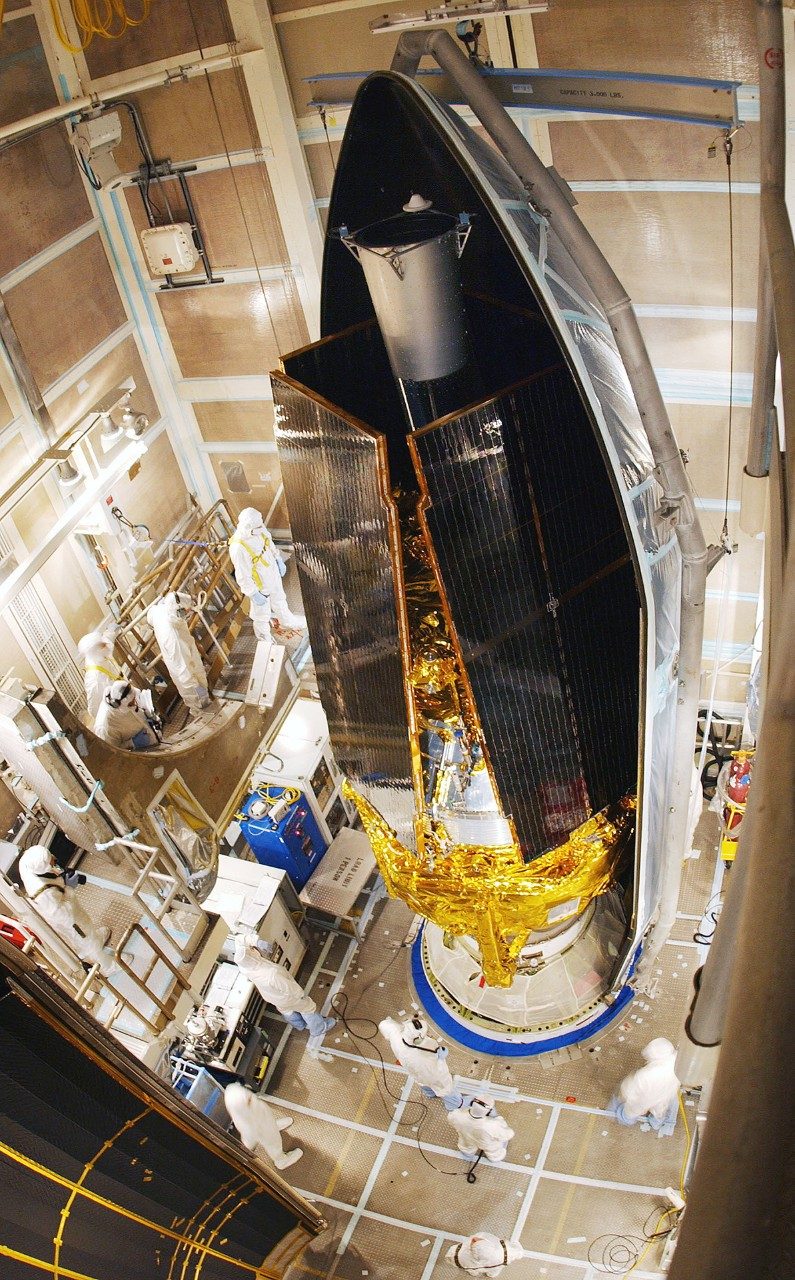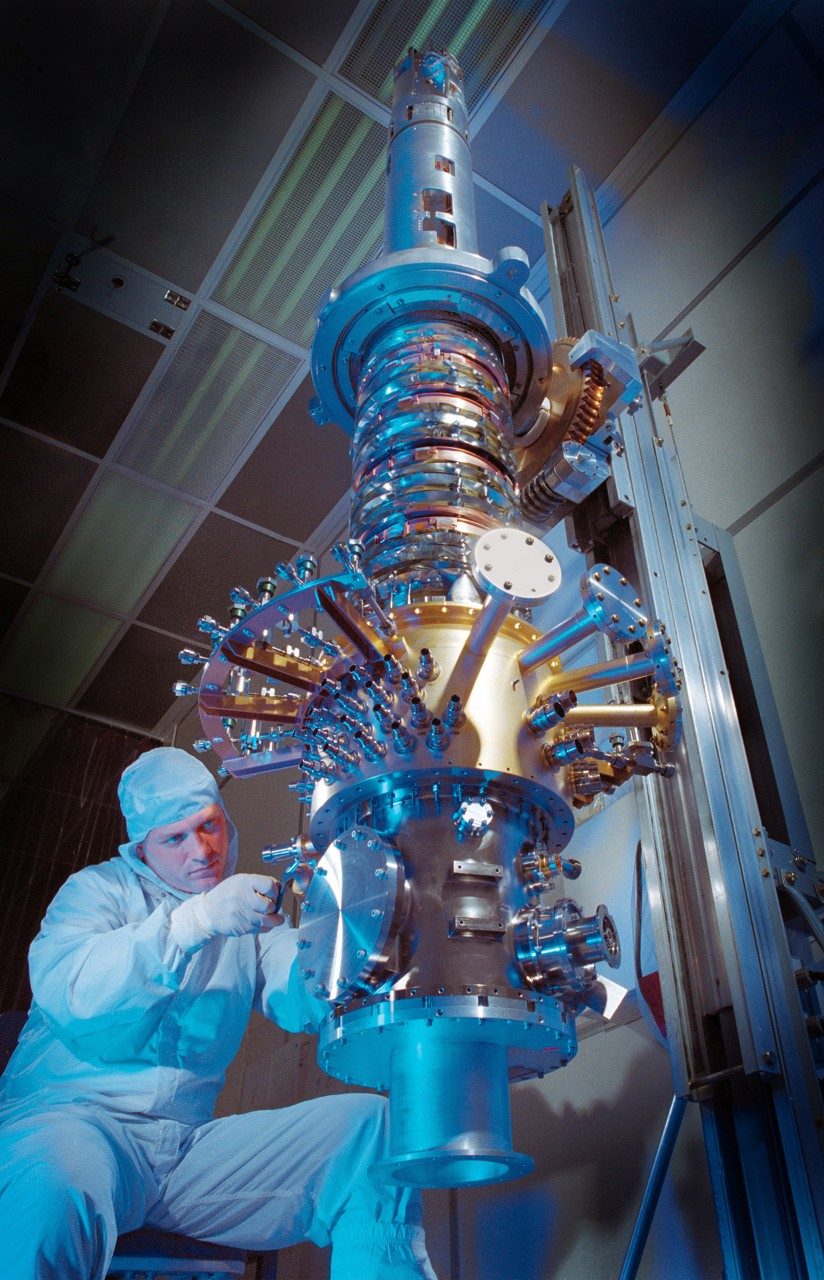
Background
In 1960, Professor Leonard Schiff of Stanford University suggested that a set of nearly perfect gyroscopes in Earth orbit could test two extraordinary consequences of Albert Einstein's theory of General Relativity. Einstein's theory, put forth in 1916, provided a completely new understanding of gravity, replacing the theory Newton had given in 1687. Newton saw gravity as attractive force acting instantaneously at a distance across space to affect all bodies. Einstein proposed instead that space, time and matter are not independent of each other, as Newton had assumed. Gravity acts not as a force but as a field that very slightly warps space and time around massive bodies such as stars and planets.
The principle behind the Gravity Probe B measurement is that ideal rotating gyroscopes, free of disturbing forces, always point in the same direction in inertial space. But "the same direction in space" meant one thing to Newton and quite another to Einstein. In Newton's physics, a perfect gyroscope pointed at a star should stay aligned forever. In Einstein's physics, the direction of the spin axis of the gyroscope will gradually change due to the mass and rotation of the Earth by an amount that can be exactly predicted. The gyroscopes will measure whether and how space and time are warped by the presence of Earth, and whether and how the rotating Earth drags space-time around with it.
Relativists call the first of the two Einstein effects the 'geodetic effect.' The second is called the 'frame-dragging effect.' Each is minute but the gyroscopes are expected to determine frame-dragging to an accuracy of better than one percent, and the geodetic effect to a few parts in a hundred thousand. This will be by far the most accurate test of any of the predicted effects of Einstein's theory.
Although Einstein's theory provides the foundations of our understanding of the large-scale structure of the Universe, there are reasons for thinking that it, like Newton's theory before it, is not the last word. Small as the two effects measured by Gravity Probe B are, their measurement will provide an extremely important advance by verifying previously untested predictions of Einstein's theory. They may provide critical clues to modern attempts to unify the four fundamental forces observed in Nature: electromagnetism, gravity, and the so-called strong and weak interactions that govern the behavior of atomic nuclei.
Furthermore, physicists believe that the two effects have major consequences elsewhere in Nature. Frame-dragging is thought to be the cause of some of the most dramatic phenomena seen in astrophysics, for example, the generation of vast amounts of power radiating from black holes. It is in measuring these tiny effects around the Earth that the engineering marvels of Gravity Probe B come into the picture.

Characteristics
The Science Instrument Assembly is simple in its concept: A block of fused quartz 21-inches long, with a bonded quartz telescope on one end, holds four gyroscopes. SQUIDs, which are very sensitive magnetometers, provide the gyroscope readouts. The gyro-telescope instrument is held in the flight probe, which is inserted into the dewar, an extremely complicated thermos bottle. The dewar holds 613 gallons of superfluid, supercold helium, which keeps the instrument chilled to about 2 Kelvin (-455 degrees Fahrenheit) for 16 months.
"Gravity Probe B is one of the few space missions NASA has conducted with relevance to fundamental physics," states a Review of GP-B undertaken by the Space Studies Board of the National Research Council. "If successful, it would assuredly join the ranks of the classical experiments of physics. By the same token, a confirmed result in disagreement with General Relativity would be revolutionary."




